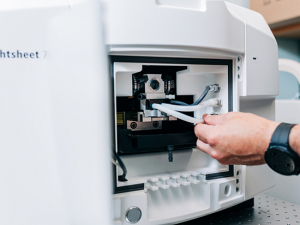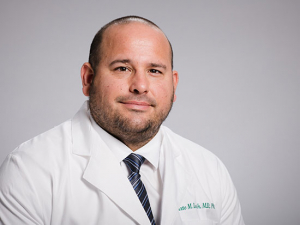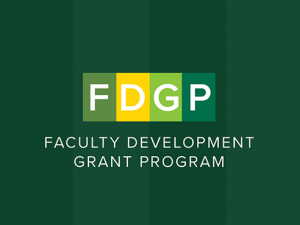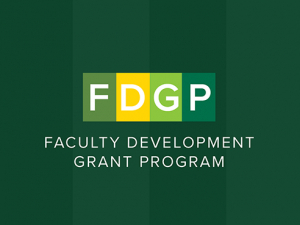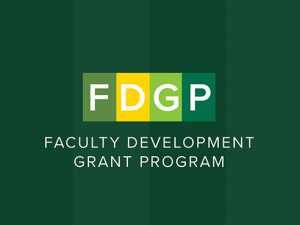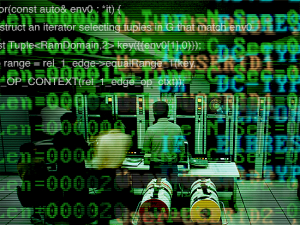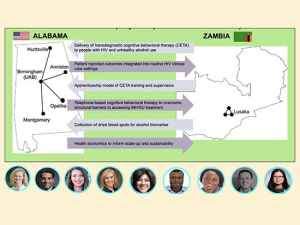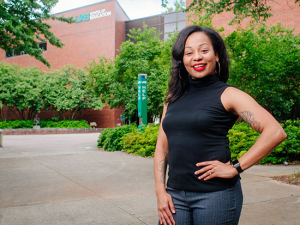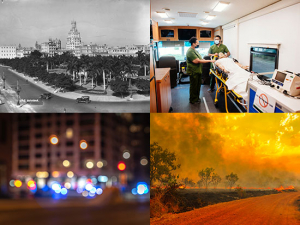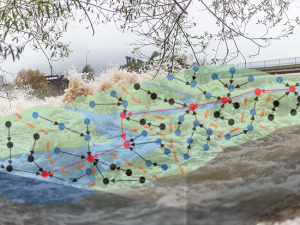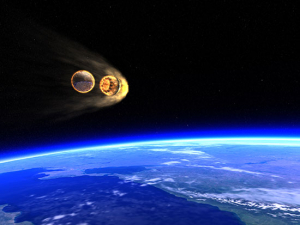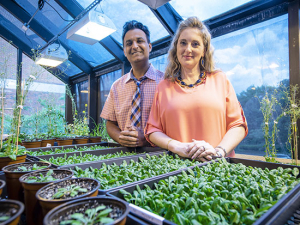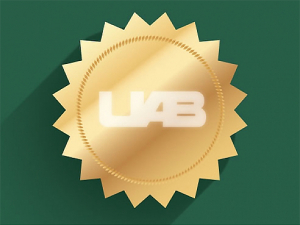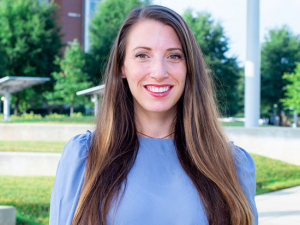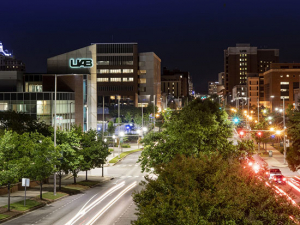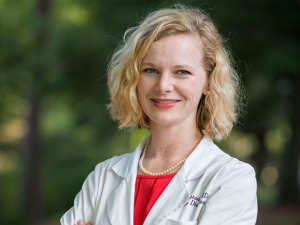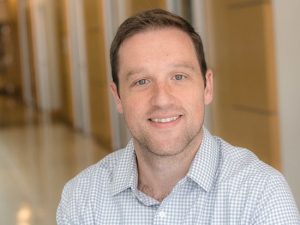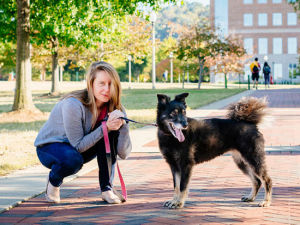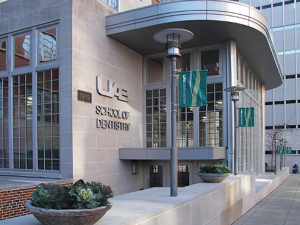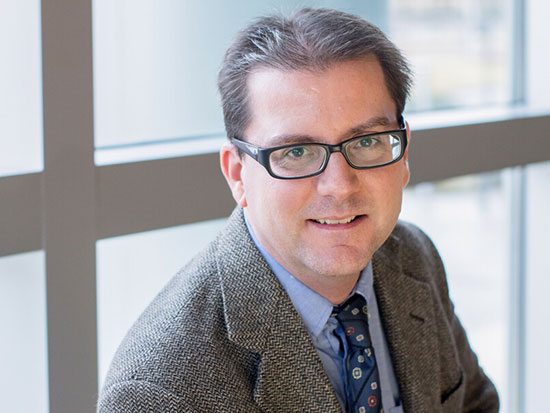 Aaron Catledge, Ph.D., associate professor in the Department of Physics, is principal investigator on an NSF grant that will bring spark plasma sintering technology to UAB.Natural diamonds form beneath the earth's surface when carbon is subjected to high temperatures and pressures. A similar process of turning a powder into a solid using heat and compression alone, without melting, is known as sintering. Sintered materials — which can include ceramics, metals, plastics and more — can be stronger and more structurally stable than other manufacturing methods.
Aaron Catledge, Ph.D., associate professor in the Department of Physics, is principal investigator on an NSF grant that will bring spark plasma sintering technology to UAB.Natural diamonds form beneath the earth's surface when carbon is subjected to high temperatures and pressures. A similar process of turning a powder into a solid using heat and compression alone, without melting, is known as sintering. Sintered materials — which can include ceramics, metals, plastics and more — can be stronger and more structurally stable than other manufacturing methods.
With a new $216,190 grant from the National Science Foundation, UAB researchers — along with other university and industry researchers in Alabama — will be able to push the sintering envelope. Those funds, along with $92,654 in matching funds from UAB, will pay for a sintering press, which uses spark plasma sintering (SPS) technology to heat and cool sintered materials extremely quickly. The SPS press can heat or cool up to 1,000 Kelvin (1,340 Fahrenheit) per minute and complete the sintering process within minutes.
"The general speed of the process ensures it has the potential of densifying powders with nanosize or nanostructure while avoiding the coarsening" seen with standard methods, said Aaron Catledge, Ph.D., associate professor in the Department of Physics. "This has made SPS a good method for preparation of ceramics based on nanoparticles with enhanced magnetic, magnetoelectric, piezoelectric, thermoelectric, optical or biomedical properties."
Ultra-high temperature ceramics able to withstand temperatures up to 2,000 Celsius (more than 3,600 Fahrenheit) could be used on the leading edges of spacecraft and supersonic aircraft, which is one of Catledge's projects. Strong, heat- and corrosion-resistant glass-ceramics could be used in new types of nuclear reactors or aerospace engines. And functionally graded materials with gradually changing physical and mechanical properties have uses in biomedical implants and energy absorption systems.
Catledge is the principal investigator on the NSF grant, and the SPS press will be installed in his lab. The grant's co-principal investigators are University Professor Sergey Mirov, Ph.D., and Associate Professor Renato Camata, Ph.D., in the Department of Physics, and Haibin Ning, Ph.D., and Manoj Mahapatra, Ph.D., both assistant professors in the Department of Materials Science & Engineering.
Ceramics able to withstand temperatures of more than 3,600 Fahrenheit could be used on the leading edges of spacecraft and supersonic aircraft. Strong heat- and corrosion-resistant glass-ceramics could be used in new types of nuclear reactors and aerospace engines. And functionally graded materials with gradually changing physical and mechanical properties have uses in biomedical implants and energy absorption systems.
"The next generation of advanced ceramics will not only rely on novel compositions and microstructures but will rely on achieving near theoretical density," which can be achieved with the SPS press, Catledge said.
Researchers throughout the state will have access to the facility, Catledge notes. This includes university researchers at institutions such as the University of Alabama and Tuskegee University, who "have research faculty developing advanced ceramics and composite materials," he said. Companies such as Huntsville's Plasma Processes and Birmingham-based Southern Research and the IPG Photonics Southeast Technology Center have also expressed interest in using the SPS press. Access to this equipment is one of the services available from the new UAB Advanced Materials Characterization Core.
"These services, conducted in collaboration with UAB faculty, often expose undergraduate and graduate students in physics, chemistry and engineering to the fast-paced world of industrial-style research," Catledge said. "Research skills developed by our students in these industry-academic partnerships are one of the reasons students graduating from the science and engineering programs at UAB are highly recruited, resulting in nearly 100% placement prior to graduation."
The NSF grant also will help engage Alabama K-12 students through demonstrations at Birmingham's McWane Science Center. "The idea is to engage the next generation of future scientists by allowing K-12 students to learn about materials in extreme environments, in what applications they are used — aerospace, lasers, advanced structural composites, superconductivity, and more — and how they are made in the lab," Catledge said.
